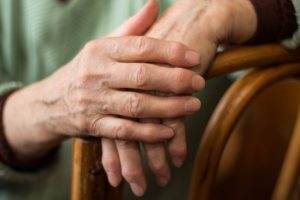
How can you avoid injury and still get the most out of the summer?
Summer sports are All-American favorites: baseball, tennis, swimming, softball, soccer, cycling, ultimate frisbee, surfing, rock climbing, kayaking, beach volleyball, archery, windsurfing, polo, golf, running, and more! But with all these exciting adventures come the risks and hazards associated with being active outdoors in hot and humid weather.
See your primary care doctor regularly.
As with any physical activity, it’s crucial to make sure you are fit enough to begin by seeing your primary care doctor regularly. Especially if you’ve had some time off due to inclement weather or sports injury, starting slowly and prudently is always the best plan. Working with a professional or trainer can be very helpful because he or she can guide you through increasingly vigorous levels of recreation.
Staying fit in the summer has its own particular challenges; namely, dealing with the heat and oppressive humidity all too familiar to the Northeast. It is even more vital that you:
- Practice assiduous warm ups and cool downs during intensely warm weather
- Take frequent breaks to stay hydrated
- Spend time in the shade
- Wear loose fitting but safe clothing for your activity can improve your body’s ability to stay cool
Whether your activity has you playing on a team or in solitary reflection, you can still practice safely by always letting someone know where you plan to go to exercise, and carrying a cell phone in case of an emergency. If you are on a team, try and find players who are close to your skill and fitness level, at least at first.
Some discomfort or soreness is to be expected anytime you increase your activity level, but if you feel any pain, be it joint, muscle, or any other kind, stop immediately and see a professional. Working through the pain means you may be ignoring your own body’s early warning system that something is awry, and may lead to greater irritation or serious injury. If you have a prior impairment, you should certainly speak with an orthopedic specialist about what level of workout you should aim for.
By following simple precautions and exercising prudent judgment, you can enjoy all the fun and sports this summer has to offer! For more great information about staying active and summer activity, visit our blog.
A common condition in the United States, joint pain can be a serious hindrance to athletic activity as well as everyday life.
An estimated two million American experience joint pain associated with cartilage injuries each year. Cartilage injuries can be debilitating and only the most modern methods of treatment can restore cartilage, minimize pain and relieve discomfort for patients of all ages.
So what is cartilage?
Cartilage is, essentially, connective tissue found in all animals, including humans. It is more flexible and softer than bone but stiffer and more rigid than muscle. As cartilage does not contain blood vessels or nerves, you cannot “feel” damage in your cartilage, though there are other signs.
There are three types of cartilage found in the human body.
Elastic cartilage is found in your ears and nose. This supports and adds shape to these structures. Fibrocartilage is tough and dense. This type is found in the joint connecting the upper pubic bones where it needs to be sturdy enough to support a lot of weight but flexible enough for childbirth. Fibrocartilage, such as the meniscus, can also be found in joints where the more flexible tissue has been destroyed. The meniscus transfers stress and protects the final type of cartilage, hyaline cartilage, from being damaged. Hyaline cartilage is the cartilage that allows healthy joints to function comfortably. Found in your joints, this type of cartilage can be degraded by arthritis, trauma and other conditions causing medical treatment to be needed.
The Cartilage Restoration Center of New Jersey, staffed by the board-certified and fellowship-trained orthopedic surgeons of AOSMI, utilizes the latest techniques to restore cartilage.
We are completely devoted to the treatment of cartilage injuries with the goal of eliminating pain, restoring function and facilitating your return to full activity.
So you suffer from joint pain and think you may have damaged your cartilage, what are your options? Joint replacement surgery and medication used to be your only option to deal with joint pain. Now with our cutting-edge technology, the board-certified physicians at AOSMI are able to offer you many conservative options, including:
- Anti-inflammatory medications (NSAIDs)
- Steroid injections
- Hyaluronic Acid injections
- Orthobiologics
- Physical Therapy
- Bracing
If conservative treatment options do not work or if the cartilage damage is too severe, there are several surgical options that focus on repairing or re-growing your cartilage, helping reduce the need for joint replacement surgery. Procedures include:
- Microfracture: An arthroscopic procedure that stimulates cartilage regeneration
- Osteochondral Autograft Transplantation – Utilizing bone and cartilage plugs taken from a low load area of the knee and transferred to the damaged area
- Osteochondral Allograft Transplant – Used when donor bone and cartilage plugs are applied in the damaged area
- DeNovo NT – Used when juvenile donor cartilage is used to repair the damaged area
- Autologous Chondrocyte Implantation – Your cartilage cells are harvested via arthroscopic surgery, grown in a laboratory and then transplanted into the damaged area
These surgical options would be performed by our board-certified, fellowship-trained orthopedic surgeons at a hospital or outpatient surgery centers depending upon the procedure.
If you suffer from joint pain or feel you may have damaged your cartilage, call us today to schedule your cartilage consultation – 732-720-2555!
It is estimated that by the year 2030, over 439 million Americans will have been diagnosed with Diabetes. For those suffering from Diabetes, there is a host of symptoms and conditions that are part and parcel of the diagnosis. Diabetic Foot is one such condition.
What is Diabetic Foot? Patients with unmanaged diabetes tend to develop any of several circulation, nail and skin, and nerve-related disorders that are mainly focused in the lower extremities. Diabetic Foot, one such disorder, is a complex condition that can turn a simple blister into a widespread infection and a complete inability to walk. When it comes to Diabetic Foot, prevention and treatment are the keys to a manageable life.
Diabetic Foot Prevention
Prevention starts with education. Understanding how Diabetes works, what leads to Diabetic Foot, and what you can do – as a patient – to prevent the condition from presenting itself is the foundation for all preventative measures. The next step is to seek out an experienced orthopedic surgeon to help you manage your diabetes. This doctor will show you how to spot signs of foot problems, advise on how often you should be seen, and lay out some helpful guidelines for physical movement and diet.
Diabetic Foot Treatment
When it comes to treating diabetic foot, the treatment depends on the severity of the condition and usually employs a host of treatment modalities. These can include dietary changes, physical therapy, and pain management. A specialist will advise you on the best treatment to ensure the highest quality of life possible.
If you believe your Diabetes is unmanaged and are concerned about developing foot disorders, call AOSMI today to speak one of our NJ orthopedic specialists to learn how to care for your disorder and schedule a consultation today.
With more than 50 million Americans (one in five adults) suffering from the chronic pain of Arthritis, May has been named National Arthritis Awareness Month. Why all the recognition? Arthritis is the number one cause of disability in our country and affects over 300,000 families. While commonly recognized, little is still understood about the illness and most do not understand the catastrophic effects Arthritis has on those who suffer and those who love them. NJ physical therapy centers report that a large percentage of their patient load is comprised of those looking to ease the physical pain of the illness while maintaining mobility. As we enter into May, let’s stop and take a look at a few facts about Arthritis.
- By 2030, up to 67 million adults are expected to be living with Arthritis.
- Arthritis is not just an illness that affects those in old age. Nearly 300,000 infants, kids, and teens suffer with a form of the disability.
- An average of 172 million workdays are missed every year by those suffering from Arthritis, and these workers are less likely to maintain regular employment than those without the disability.
- On average, the country sees one million hospitalizations a year due to Arthritis-related injuries and conditions.
- $156 billion dollars worth of lost wages are seen every year as a result of the illness.
Now that you understand more about the condition, how can you help?
There are a number of reputable organizations dedicated to helping those with Arthritic conditions. To get involved with the cause, contact the Arthritis Foundation to learn about making donations, volunteering to help with their events and signing up for their e-newsletter. If you are suffering from the pain of Arthritis yourself, call AOSMI today to speak with an orthopedic specialist about how physical therapy and pain management services can help you.
Running a marathon is an incredible undertaking requiring discipline, passion, and lots and lots of preparation. For all the hard work that goes into preparing your body to run a marathon, the sense of accomplishment when you cross the finish line–for the first time or the fiftieth–is unmatched. If you are new to marathon training, take these suggestions to ensure that you train smart and effectively.
- Start Where You Are. It is difficult to train appropriately when you aren’t aware of your current skill level. If you are brand new to running, check with your doctor to make sure you are healthy enough for this sort of exercise and let him or her help you determine an appropriate starting level of intensity. Pushing yourself too hard, too fast can lead to a sports injury.
- Have a Plan and Stick to It. There are plenty of apps and online resources to give runners of all ability levels an effective and appropriate training schedule. This plan will be more than just how much you run and how often. Break your goal of running a marathon into smaller goals you can prepare for, such as running a 5K or half marathon.
- Fuel Properly with Good Nutrition. Even if you are running in part to achieve weight loss, it is important to increase your intake of calories when training to avoid fatigue and muscle loss. Be sure your calorie expenditure (including running) is about the same as your caloric intake. Also, make sure you are eating the optimal amount of protein and other nutrients for your body size, age, and gender.
- Listen to Your Body. Running can take a heavy toll on the bones and joints. If you are experiencing pain, don’t try to tough it out. An unaddressed injury could not only derail your marathon aspirations; it can necessitate surgery, missed work time, and other adverse consequences.
If you have experienced pain while running, an experienced orthopedic specialist at Advanced Orthopedic and Sports Medicine Institute can help determine the exact nature of your issue. Request an appointment with us today to get back to your fitness routine as soon as possible.
Advanced Orthopedics and Sports Medicine Institute is a medical practice located in Freehold and Monroe, NJ, our medical professionals are experts in orthopedic surgery, joint replacement, sports medicine, integrative wellness, spine care, physical therapy, and more.











